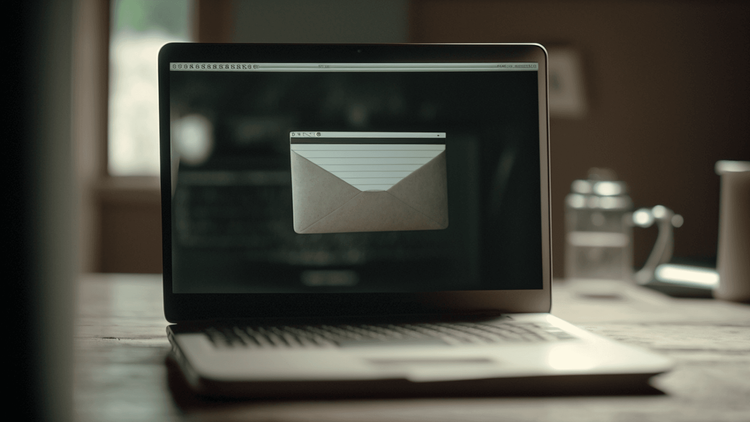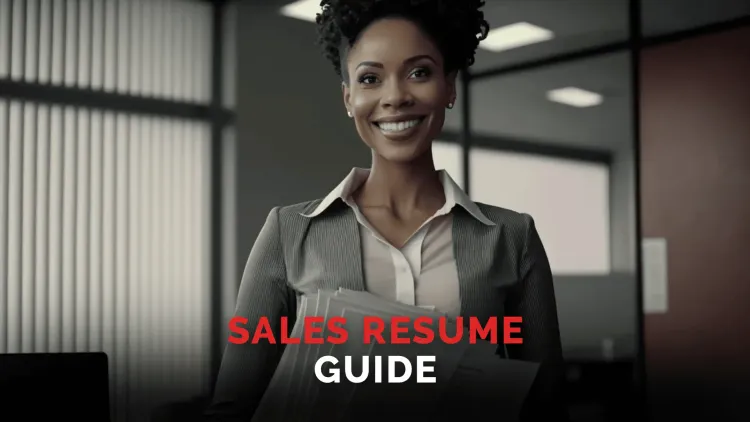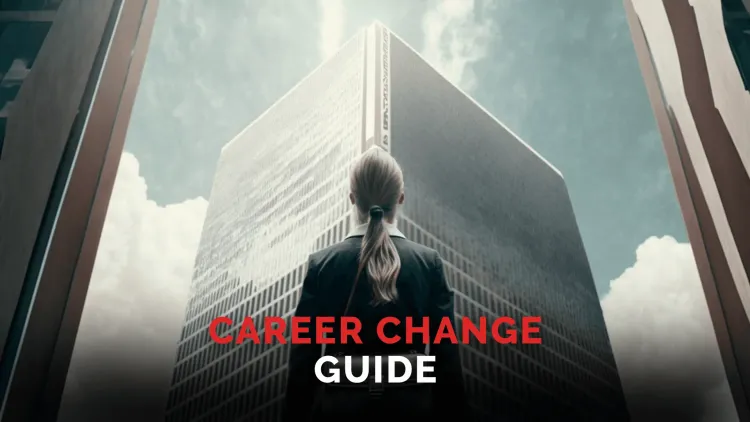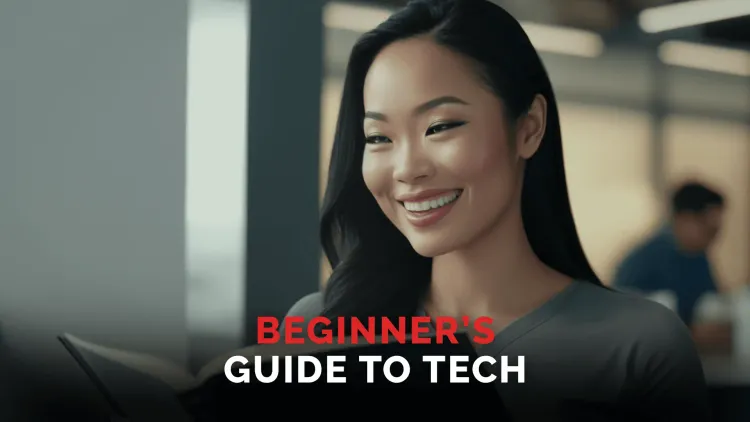Email Etiquette 101: Nine Rules Every Tech Professional Needs To Follow
For new sales reps, learning how to use email effectively can be a challenge. And sometimes you have to learn things the hard way — but only if you skip this blog!

Dec 21, 2022
Email etiquette makes the world go ‘round. As an emerging professional, you need to figure out how to manage your email. Because it’s not just for sharing internal memos.
About28% of your daywill be spent reading, thinking about, or replying to emails. While there are lots of other popular tools for internal and external collaboration, email is still the gold standard, and will no doubt be irreplaceable for your boss, clients, teammates, vendors, and other professional contacts.
So let's get started, email etiquette 101.
It’s sink or swim.
Rise or fall.
Make or break.
....you need to get this right.
Nine Email Etiquette Rules Every Professional Needs To Know

1 - Format Your Emails Properly
You might be tempted to write an email like a text message.
Resist that urge. Professional emails—no matter how informal—are generally expected to follow professional standards of communication. This forms the basis of email etiquette.
With very few exceptions, if it’s worth writing in an email, it’s worth being careful about your message’s subject, opening, body, and closing.

a. Subject lineA well-written subject line succinctly states the purpose of the email so that the recipient knows what to expect when they open the message. A poorly written subject line could lead to your email being ignored, or even automatically sorted into a spam folder.
b. OpeningEmail is the direct descendant of handwritten correspondence, which followed very formal rules of writing. You can think of it like a conversation with your grandmother: You shouldn’t start the conversation without saying hello first! In a professional setting, you should include a short greeting to the recipient at the start of the email. In Western corporate cultures, you can usually get away with Hi (first name)”.
c. Email BodyThis is the meat of the message. It should be specific and clear, without being too long-winded.
What do you need? Are you looking to arrange a meeting? Do you need feedback on a presentation? Briefly explain why, and then pointedly make your request.
A concise message is more likely to be read, and more likely to be responded to in full. If you’re re-using email content, be extremely careful about formatting. When you copy and paste a message from elsewhere, the font family and font size can get switched, causing you to look sloppy and even careless.
d. ClosingIt’s not enough to open politely. You also need to close well. You don’t need to be too formal—just don’t forget about it! Common sign-off examples include Best,” Best wishes,” Regards,” Thanks,” Sincerely,” and even Cheers.”
2 - Spelling and Grammar Counts

It’s an email, not a contract. You don’t need to waste time being perfectly exacting about your choice of words, but they shouldn’t be as sloppy as the texts you send your BFF.
Write out words in full, watch out for spelling errors and sentence fragments, proofread your emails, and NEVER WRITE IN ALL UPPERCASE or all lowercase letters.
If you struggle with proofreading, or if Business English isn’t your most comfortable language, consider installing a free tool likeGrammarlyto help you with your writing.
3 - Be Professional

An email may not be a press release, but similar professional standards apply. Now and then you can get away with an exclamation mark, a few emojis, or even a GIF image. They may even help you to differentiate yourself.
But while a touch of humor is great, don’t over-do it. And of course, never be insensitive or rude, don’t curse or swear, and avoid getting off-topic. It’s an email, not a water cooler.
4 - Reply-All Is Not Your Friend

When you reply to an email, your email provider may present you with two options: Reply,” and Reply All”. Be wary.
Who received the original message? Because that’s who your response will go to if you select Reply All”. Do all of them need to see your reply? Would any of them be upset if theydidn’treceive your reply? How does the information you’re sharing help them? Could your response embarrass anyone?
Nothing causes simmering office resentment quite like aseries of unnecessary reply-all messages. Don’t let the resentment be pointed at you. Avoid using it.
5 - Know When To CC or BCC
The save” icon is a floppy disk, and CC” stands for carbon copy.” Unfortunately neither of these facts provide useful information to anyone born in the last 25 years. But that’s the reality we live in.
When you send an email, there arethreerecipient lines: To”, CC”, and BCC” (forblindcarbon copy). Generally speaking, the intended recipients of your email should go in the to” section. The order of recipients isn’t particularly important. Just get them in there and get on with it.
CC can be used to include secondary recipients in an email. These days, including a CC is usually a flex:
- Do youreallywant to make it clear that you’ve included other recipients? Use the CC line.
- Is someone ignoring your messages? You might want to CC their manager.
- Have you added someone new to an email chain? Add them as a CC so that it’s clear that you’re not being sneaky.
- Or CC someone who is only receiving the message for informational purposes, but not expected to reply.
BCC, finally, is more secretive. The people you BCC will receive the message, but the primary recipients won’t see the BCC address or know that additional copies were sent.
- Should a person or software tool be tracking your emails? You could BCC them on your replies.
- Do you need to quickly send out an email to multiple people, without them knowing who else received it? You could BCC them all.
- Or if someone is no longer needed on an email chain, you could move them to BCC and release them with a thank-you.
6 - Respond On Time
Email etiquette generally doesn’t demand asimmediate of a reply as an instant message. You can and should prioritize your email replies according to their importance:
- Is it a quick and important question from your manager or from a prospect? Aim to reply within a few hours.
- Did it arrive late in the day, or over the weekend? Save it for tomorrow.
- Is it a detailed inquiry that requires a lot of your time and attention? You can often get away with taking a few days to respond.
- Is it only for information, or is it from someone trying to sell you something? You may be able to get away with ignoring it—though the decent thing to do is to thank them, or to tell them that you’re not interested!
7 - Choose the Medium for the Message
We live in the age of communication. There are basically infinite ways to connect with people. So which is the right one? Should you try to set up a Slack channel with a prospective client? Should you phone your CEO?
Let the communication form be decided by the needs of the message. Consider the urgency of the request, the complexity of the response, the record-keeping requirements, and the norms of the recipient.
Opt for an email when what you’re sharing:
- Is very important, and you’d like to underscore that importance
- Is of low urgency, such that a reply can wait a day or two
- Has a lot of detail that can’t risk being lost
- Might need to be forwarded outside of your organization
And most importantly, try to meet people where they’re at. You probably wouldn’t phone a newspaper to share your opinion, nor try to order a pizza over Slack. And you probably wouldn’t try to email for tech support when your internet service is down.
So if you always talk to someone on the phone, or they’re constantly messaging you on Slack, use the medium they’re comfortable with… As long as it continues to suit your purposes!
8 - Include Your Signature in Every Thread
An email signature is more than just a formality: It’s a useful summary ofyou.
Your employer will likely have standard instructions for their branded email signatures. Generally, an email signature will be separated by two dashes and a space (-- ”), then on subsequent lines will include your name, job title, contact details, and a little bit more about the company.

Prospects will look to your signature to quickly find a link to your website. Your coworkers will check it for a helpful reminder of your responsibilities. Your manager will use it to quickly grab your phone number.
So give the people what they want!
Of course, if you’re sending emails back-and-forth rapidly or for a long period of time, you don’t necessarily need to include your signature in every message:
As you decrease formality, you’ll likely not want to clutter your communications with repeated signatures.
But even when you’re communicating with someone with whom you have a longstanding relationship, don’t make yourself hard to find. Slip your signature into the mix every now and then. If you’re using a Gmail account, toadd a signature to your account:
- In the upper-right corner of the screen, click the Settings button. If Gmail presents a condensed menu, click See all settings.”
- Under the General tab, scroll down to the Signature section.
- Click Create New”, name your signature (you can have more than one!), and enter the text for your email signature.
- Scroll to the bottom of the page and click the Save Changes button.
- When you’re drafting a message, you can control the signature by clicking the pen” icon at the bottom of the Gmail view.
9 - Security Matters
Emails may give a sense of privacy and security, but they’re only as private or as secure as we treat them. Confidential emails can get leaked. Passwords can get hacked. Identities can be falsified. And damages can be real.
Your company probably has filters protecting your inbox from spam, scam, and phishing emails. But some will inevitably find their way through to you. If you reply incorrectly, thefinancial costcan be massive.

If you’ve been asked to do anything that seems sensitive (like making a purchase), check the sender. Is it really your boss, or is it someone pretending to be them? Check on another medium, like on Slack. Confirm with an internal resource, such as HR or IT.
Here are just a few of the many common scam requests that target office workers:
- Make changes to vendor payment information
- Purchase gift cards for clients
- Share an employee directory
- Make a phone call on behalf of an executive
- Send emergency money to extract a coworker from an unusual situation
- Help the finance department move funds between accounts
Does an email seem weird?Report it.Don’t know who the sender of an email is?Ask questions. And never click an email link unless you absolutely trust the source.
When companies talk abouttheir cultureortheir expectations, often email behavior is a big part of it. Every business operates a little bit differently, but ultimately they all follow the same broad rules of etiquette.
Follow these email etiquette rules, and you’ll adapt quickly in your new role. But if you ignore them, people will notice. And you won’t like how they respond.






